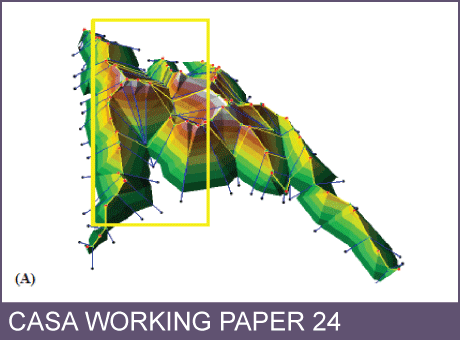CASA Working Paper 24

1 July 2000
Experiments on the generalisation and visualisation of surface networks
Parameterisation of a topographic surface into a framework of fundamental points and lines is a prominent research topic in geographic information science. Metric Surface Network also called Pfaltz's graph or surface network is an example of such a framework. Surface Network is a graph topological data structure and pits, passes, peaks are its three sets of vertices while ridges (lines from passes to peaks) and channels (lines from pits to passes) make up the edge set. Each point and line is assigned a weight, which indicates their importance in the surface.
The most significant aspect of surface network is their ability to undergo generalisations by a graph theoretic technique called homomorphic contraction, which reduces the number of points and lines but preserves the topological structure of the corresponding topographic surface. This paper presents a review of the generalisation and visualisation methods by experimenting with two surface networks, one hypothetical and the other from Latschur region in Western Carinthia, Austria. Experiments revealed that the traditional weight measure i.e., difference in elevation between a pair of linked points, may not be able to provide desired generalisation and as an alternative three new weights measures namely edge lengths, edge slopes and degree (or valency) of points are proposed. This work also proposes the use of 3D visualisation for surface networks to understand the topological relations between points more clearly.
This working paper is available as a PDF. The file size is 511KB.
Authors: Sanjay Rana
Publication Date: 1/7/2000
 Close
Close

